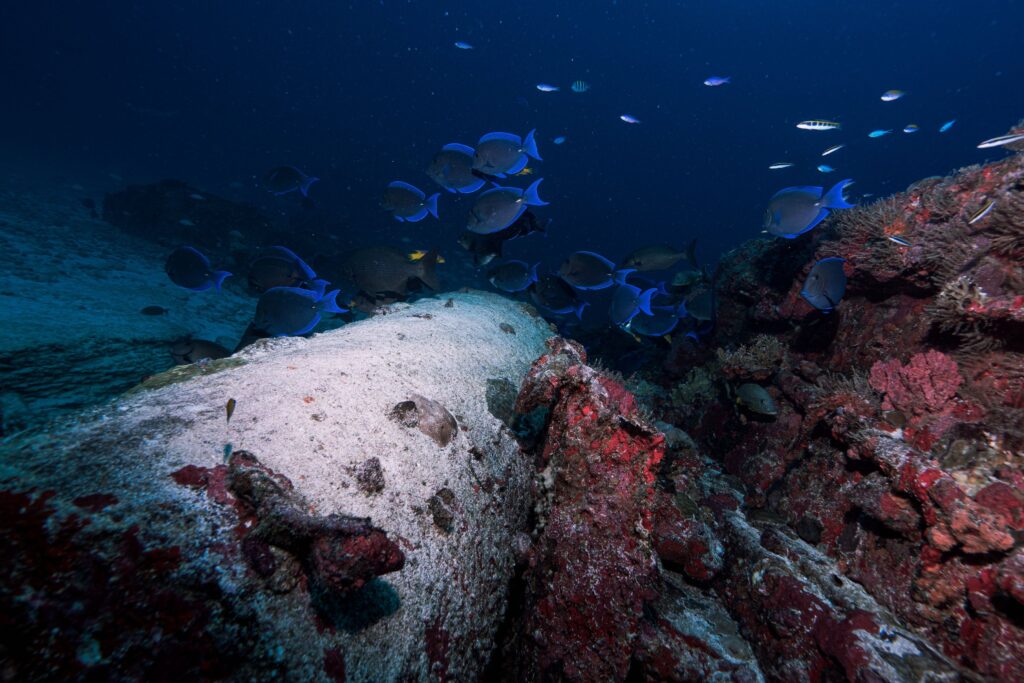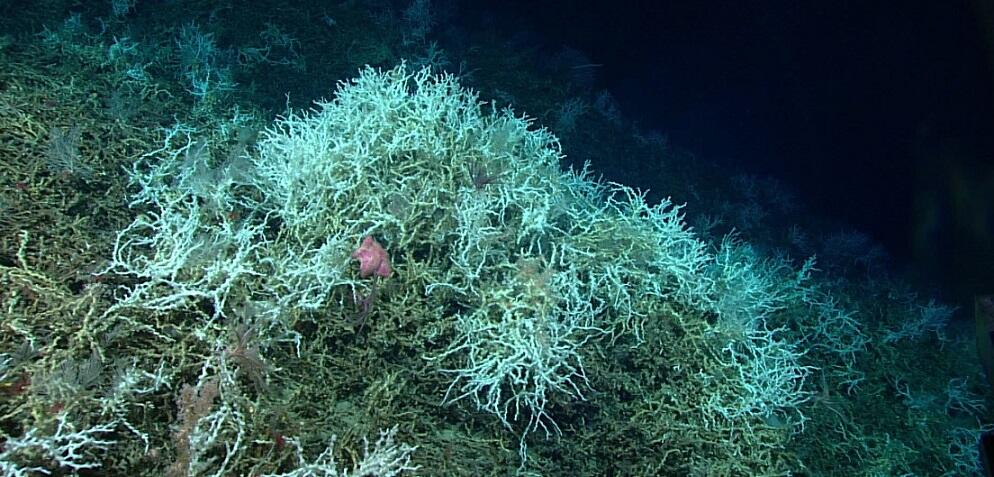The longest-living vertebrate, the Greenland shark, inhabits the mysterious depths of the ocean, where it can live up to 500 years. Ironically, despite this incredible longevity, the shark is toxic due to high levels of trimethylamine N-oxide in its flesh, showing that the deep sea holds both marvels and potential hazards. Yet, as humanity explores the stars, our own ocean depths remain a profound enigma. Contrary to early beliefs that these realms are dark, barren, and unchanging, deep-sea ecosystems are dynamic, diverse, and rich in life, each layer presenting unique inhabitants and interactions.
The Lightbearers of the Abyss
Many deep-sea species use bioluminescence—a chemical light they produce—to navigate the darkness and evade predators. This “living light” appears in iconic creatures like the anglerfish, lanternfish, and Atolla jellyfish, enabling them to survive and hunt in pitch-black surroundings. Some, like the giant squid, have large eyes adapted to gather the faintest light, while others like the deep-sea anglerfish have flexible, soft bodies that withstand immense underwater pressures.
Deep Adaptations for Survival
Many of these remarkable species have evolved unique mechanisms to cope with extreme conditions. Unlike shallow-water fish, which rely on swim bladders for buoyancy, many deep-sea fish lack these organs, adapting instead to high-pressure environments. Certain fish even produce antifreeze proteins to prevent their tissues from freezing in near-zero temperatures. Variegated snailfish and ocean pout are prime examples of fish that can endure the intense cold of Arctic and North Atlantic waters.
Fragile Abyssal Plains: Rich Yet Unseen
The abyssal plains—flat, cold stretches covering 75% of the ocean floor at depths of 3,000 to 6,000 meters—harbor a stunning variety of life. Filter feeders, with specialized structures to trap food particles, flourish here. The discovery of hydrothermal vents near the Galápagos Rift in 1977 was a breakthrough in understanding how these ecosystems support life. In this nutrient-scarce region, chemosynthetic organisms use chemicals from the vents rather than sunlight, forming a foundation for life at the vents.
The Profound Depths of Trenches
The Earth’s deepest trenches, like the Mariana Trench, plunge to depths of over 11,000 meters. This alien landscape, under crushing pressure, is home to creatures such as the xenophyophores and the deep-sea dragonfish, each highly specialized to endure the inhospitable conditions.
Coral Reefs Beyond the Tropics
Deep-sea coral reefs, such as Lophelia pertusa off the South Carolina coast, grow at frigid depths, creating complex ecosystems distinct from tropical reefs. These corals can form vast colonies that serve as shelters for marine life and help researchers track long-term climate changes. Yet, they face increasing threats as rising CO₂ levels alter the availability of carbonate ions essential for coral and shell formation.
The Dual Threat of Human Impact
Despite their remoteness, deep-sea ecosystems are not untouched by human activity. Climate change, pollution, overfishing, and industrial exploitation like deep-sea mining threaten their survival. Ocean currents, which these ecosystems help regulate, play a crucial role in distributing heat and nutrients and influence global weather patterns. Any disruption to these currents could result in dire climatic consequences.
Pollution, from heavy metals and plastics to ghost fishing gear, damages deep-sea habitats. Overfishing and bycatch disrupt food webs, while bottom trawling devastates delicate seafloor communities. The push to mine valuable minerals such as polymetallic manganese nodules further endangers these ecosystems, posing ethical questions about conservation versus exploitation.
A Path Uncharted: A Choice for the Future
As the least explored and least understood ecosystems on our planet, deep-sea habitats offer insights into evolution, adaptation, and climate change mitigation. They capture and store carbon in ocean sediments, helping to regulate the Earth’s climate. Yet our growing needs for resources place them at risk, even as we remain largely ignorant of their full ecological significance.
The question is stark: Do we choose to exploit these precious resources for immediate gain, or do we embrace conservation, respecting these ecosystems as essential parts of our planet? Humanity stands at a crossroads, and the choice we make will shape the world we leave for future generations. Will we follow the well-trodden path of extraction and consumption? Or dare we take the road less traveled, preserving the mystery and majesty of Earth’s final frontier?
Written by Ms.Pankaja Vinayak Vaidya
Edited and Reviewed by Mr. Rushikesh Rajendra Sankpal

References-
- Hall, D. (2018, December 18). The Deep Sea. Smithsonian Ocean; Smithsonian. https://ocean.si.edu/ecosystems/deep-sea/deep-sea
2. Scott, K. (2024, March 6). Animals of the ocean depths. Oceana. https://oceana.org/blog/animals-of-the-ocean-depths/
3. Waller, R., & Shank, T. (2019). Deep Sea Biology – Dive & Discover. Dive & Discover. https://divediscover.whoi.edu/hot-topics/deepsea/
4. What conditions exist for life in the deep ocean?: Ocean Exploration Facts: NOAA Office of Ocean Exploration and Research. (2019). Noaa.gov. https://oceanexplorer.noaa.gov/facts/deep-habitat.html
5. Miller KA, Thompson KF, Johnston P and Santillo D (2018) An Overview of Seabed Mining Including the Current State of Development, Environmental Impacts, and Knowledge Gaps. Front. Mar. Sci. 4:418. doi: 10.3389/fmars.2017.00418
6. Roberts, J. M. (2006). Reefs of the Deep: The Biology and Geology of Cold-Water Coral Ecosystems. Science, 312(5773), 543–547. https://doi.org/10.1126/science.1119861

